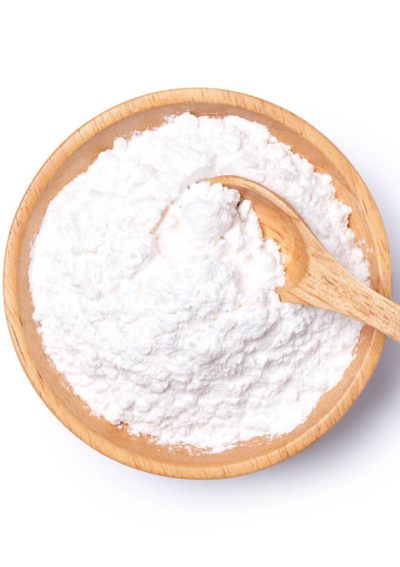Is Talcum Powder Safe?
Talcum powder contains the mineral talc that can be contaminated with asbestos, the primary cause of mesothelioma and other diseases. Johnson & Johnson recalled one lot of baby powder in 2019 when a test sample contained asbestos. Research is ongoing on potential health effects of talc itself.

Is Talc Bad for You?
The safety of talc itself remains under study as research continues on potential adverse effects. This naturally occurring mineral is mined and processed for personal care products, such as cosmetics and baby powder, to prevent caking, improve product texture or absorb moisture.
In its natural form, talc can be contaminated with varying levels of asbestos, a carcinogen that causes mesothelioma, lung cancer and ovarian cancer. There is no known safe level of asbestos exposure. So, is talcum powder safe to use?
Cumulative exposure to asbestos leads to mesothelioma. Use of cosmetic talc is often overlooked as a source of asbestos exposure.
Some studies suggest an increased risk of lung cancer, mesothelioma and respiratory diseases among talc miners and millers. The U.S. Food and Drug Administration deems it unacceptable for cosmetic talc to contain asbestos.
No laws or regulations prevent asbestos contamination, making it an ongoing concern. As of June 2023, more than 37,000 talcum powder lawsuits were pending.
Cancers and Conditions Associated With Talcum Powder
Some studies link talcum powder and cancer, especially ovarian cancer. Research is ongoing, but there are two theories regarding how talcum powder may cause ovarian cancer. The first hypothesis assumes asbestos contamination. The second relates to talc use on or near a woman’s genitals.
The American Cancer Society reports some research shows a higher cancer risk in certain groups of women who use talcum powder. A systematic review published in 2022 concluded: “This review suggests an increased risk of ovarian cancer associated with frequent perineal powder exposure of 31% to 65%.”
- Asthma
- Breast cancer
- Cervical cancer
- Endometrial cancer
- General respiratory problems
- Laryngeal cancer
- Lung cancer
- Mesothelioma
- Ovarian cancer
- Pneumonia
- Respiratory problems in infants
- Uterine cancer
Exposure to talcum powder can lead to respiratory conditions. A February 2023 review of talc inhalation in both rats and humans stated that animal data, “Together with the pulmonary effects observed in exposed talc miners, a STOT-RE 1 classification is warranted.” A STOT-RE 1 category designates hazards found to be toxic to humans or animals after repeated exposure.
Can Talc Be Used Safely?
The FDA rates Talc as generally recognized as safe. It’s considered safe for skin use and ingestion in food products when mined, manufactured and used according to recommendations. However, asbestos occurs naturally within the earth with talc. It’s extremely difficult to purify talc contaminated with asbestos fibers.
Long-term exposure or inhalation of talc may increase the risk of cancer and other conditions. It may lead to health problems if applied to the genitals, broken skin, armpits or groin. Talcum powder may also harm babies, as studies have shown that its use may lead to complications such as wheezing, shortness of breath, pneumonia or, in rare cases, respiratory failure.
The Occupational Safety and Health Administration recommends protections for industrial talc workers to protect themselves from possible harmful effects. These recommendations include using “any particulate respirator equipped with an N95, R95 or P95 filter (including N95, R95 and P95 filtering facepieces) except quarter-mask respirators.”
Debunking Common Myths About Talcum Powder
There are several myths regarding talcum powder use. The need for more research leads to confusion regarding the safe use of talc products.
Myths persist about the safety of pure, uncontaminated talc, as well as food safety and testing for asbestos. It’s important to know potential risks to make informed decisions about consumer products that may contain talc.
Myth: Talc is only a problem if it contains asbestos.
Fact: While there needs to be more research into the link between cancer and pure talc, some studies have shown that asbestos-free talc can still have adverse health effects. The severity of adverse effects can depend on the length of exposure.
Asbestos-free talc can irritate the eyes, skin, nose, throat and lungs. It can cause short-term effects such as eye damage, rashes, wheezing, coughing and shortness of breath. Long-term exposure to talc may result in bronchitis and, in rare cases, potentially fatal lung scarring.
Myth: There are no concerns about talc in food and supplements.
Fact: The FDA considers talc ingestion generally safe and there are no federal regulations requiring products to be asbestos-free. However, research has shown a link between ingesting asbestos and cancers such as mesothelioma. Mesothelioma is an aggressive cancer found in the tissue linings of internal organs, most commonly the lungs.
Read food ingredient labels to look for talc or talcum powder. Also look for magnesium silicate, which is the primary component of talc.
- Baked goods
- Candy
- Cereal grains
- Chewing gum
- Chocolates
- Coffee creamers
- Dried fruits
- Pastries
- Rice
- Supplements
Supplements are not regulated the same way drugs are. The FDA classifies and regulates them as food. Manufacturing companies are responsible for ensuring safety standards and correct labels for their dietary supplement products.
Myth: Products with talc are all tested for asbestos and deemed safe.
Fact: The FDA has little oversight over the cosmetic talc industry and doesn’t require manufacturers to test for asbestos. Companies police themselves and test products to ensure consumer safety. However, the testing processes have inherent issues.
No test can totally guarantee that talc is free of asbestos. Tests have detection limits that prevent them from accurately identifying asbestos fibers. Talc doesn’t contain an even distribution of asbestos, so even the most sensitive tests can miss fibers if absent from the testing sample.
Despite long-recognized shortcomings in accuracy, polarized light microscopy tests remain the standard. Labs with expertise testing for asbestos perform electron microscopy for higher quality testing.
17 Cited Research Articles
Consumernotice.org adheres to the highest ethical standards for content production and references only credible sources of information, including government reports, interviews with experts, highly regarded nonprofit organizations, peer-reviewed journals, court records and academic organizations. You can learn more about our dedication to relevance, accuracy and transparency by reading our editorial policy.
- Harper, A.K. et al. (2023, April). Talcum powder induces malignant transformation in normal human primary ovarian epithelial cells. Retrieved from https://www.minervamedica.it/en/journals/minerva-obstetrics-gynecology/article.php?cod=R09Y2023N02A0150
- Borm, P.J.A. (2023, February). Talc Inhalation in Rats and Humans: A Review and Appraisal of Available Evidence. Retrieved from https://journals.lww.com/joem/Fulltext/2023/02000/Talc_Inhalation_in_Rats_and_Humans__A_Review_and.10.aspx
- Moline, J., Patel, K. & Frank, A.L. (2023, January 18). Exposure to cosmetic talc and mesothelioma. Retrieved from https://occup-med.biomedcentral.com/articles/10.1186/s12995-023-00367-5
- OSHA. (2023). Personal Protective Equipment. Retrieved from https://www.osha.gov/sites/default/files/publications/osha3151.pdf
- Cancer.org. (2022, December 6). Talcum Powder and Cancer. Retrieved from https://www.cancer.org/cancer/risk-prevention/chemicals/talcum-powder-and-cancer.html
- Anderson, E. & Zagorski, J. (2022, June 14). What’s the risk? Talc-based Cosmetic Products. Retrieved from https://www.canr.msu.edu/news/talc-based-cosmetic-products
- FDA. (2022, June 2). FDA 101: Dietary Supplements. Retrieved from https://www.fda.gov/consumers/consumer-updates/fda-101-dietary-supplements
- FDA. (2022, February 25). FDA Advises Consumers to Stop Using Certain Cosmetic Products. Retrieved from https://www.fda.gov/cosmetics/cosmetics-recalls-alerts/fda-advises-consumers-stop-using-certain-cosmetic-products
- Woolen, S.A., Lazar, A.A. & Smith-Bindman, R. (2022, February 2). Association Between the Frequent Use of Perineal Talcum Powder Products and Ovarian Cancer: a Systematic Review and Meta-analysis. Retrieved from https://link.springer.com/article/10.1007/s11606-022-07414-7
- Lockett, E. & Nall, R. (2021, December 15). Does Talcum Powder Cause Cancer? Retrieved from https://www.healthline.com/health/cancer/does-talc-cause-cancer
- National Cancer Institute. (2021, November 29). Asbestos Exposure and Cancer Risk. Retrieved from https://www.cancer.gov/about-cancer/causes-prevention/risk/substances/asbestos/asbestos-fact-sheet
- FDA. (2020, January 6). Executive Summary: Preliminary Recommendations on Testing Methods for Asbestos in Talc and Consumer Products Containing Talc. Retrieved from https://www.fda.gov/media/134005/download
- Egilman, D. (2019, December 9). Test methods for asbestos in talc. Retrieved from https://www.congress.gov/116/meeting/house/110311/documents/HHRG-116-GO05-20191210-SD005.pdf
- Mass.gov. (2019, June 1). Bureau of Climate and Environmental Health. Talc in cosmetics and consumer products. Retrieved from https://www.mass.gov/info-details/talc-in-cosmetics-and-consumer-products
- Stefl, P. (2016, May 16). STOT – the new hazard category by GHS classification. Retrieved from https://www.gesi.de/en/blog/2016/05/16/stot-die-neue-gefahrenkategorie-durch-einstufung-in-ghs/
- Fiume, M.M. et al. (2015, August). Safety Assessment of Talc as Used in Cosmetics. Retrieved from https://pubmed.ncbi.nlm.nih.gov/26227892/
- New Jersey Department of Health. (2009, December). Hazardous Substance Fact Sheet. Retrieved from https://nj.gov/health/eoh/rtkweb/documents/fs/1773.pdf
Calling this number connects you with a Consumer Notice, LLC representative. We will direct you to one of our trusted legal partners for a free case review.
Consumer Notice, LLC's trusted legal partners support the organization's mission to keep people safe from dangerous drugs and medical devices. For more information, visit our partners page.
855-613-6647
